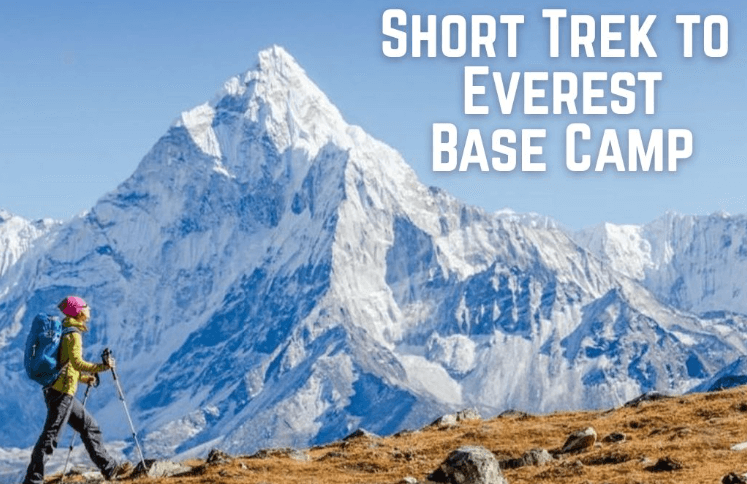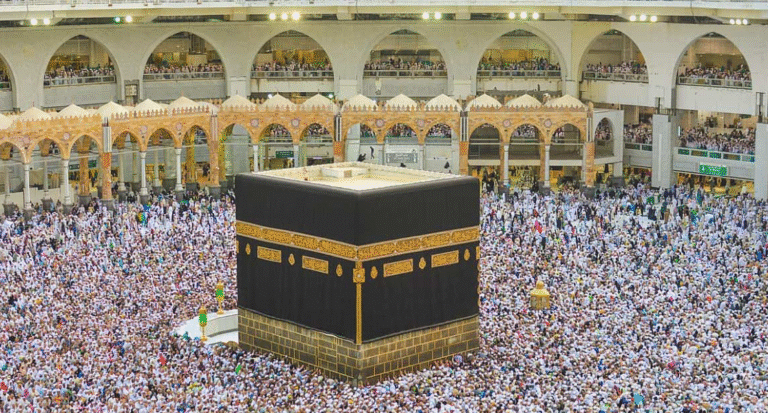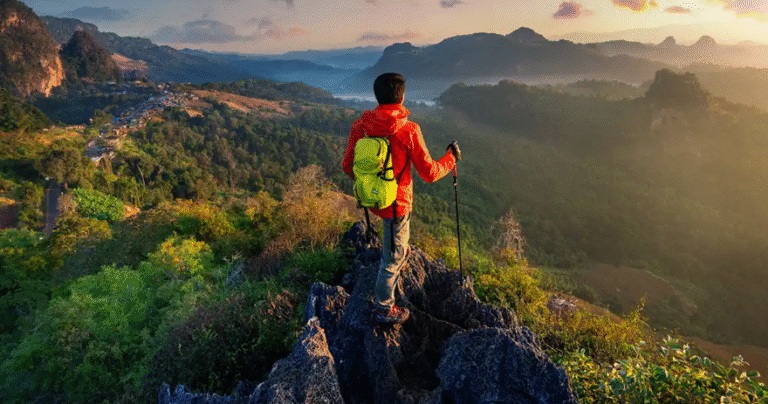Touch the Himalayas: Ultimate Short Trek to Everest Base Camp
Standing at the foot of the world’s tallest mountain is a dream that speaks to the soul of every adventurer. But what if you could live that dream without spending two or more weeks on the trail? With the Everest base camp short trek, this incredible journey becomes accessible to travelers who want to experience the majesty of the Himalayas on a tighter schedule.
This ultimate short trek condenses the best of the classic Everest trail into a more efficient, high-impact adventure. It’s not about rushing the experience—it’s about maximizing every moment, every view, and every step on your way to one of the most iconic places on Earth.
Why the Short Trek Is Gaining Popularity
In recent years, more trekkers have sought ways to explore Everest Base Camp (EBC) without committing to the traditional 12- to 14-day itinerary. Whether you’re constrained by vacation days, planning multiple adventures in Nepal, or simply looking for a more intense challenge, the Everest base camp short trek offers the perfect solution.
This route is not a compromise on experience. It includes all the scenic highlights, cultural interactions, and elevation gains that make the full trek memorable—just with less downtime and more purposeful pacing.
What to Expect on the Shortened Route
The shortened itinerary usually lasts 8 to 10 days. It starts with a thrilling flight into Lukla, known for its dramatic runway carved into the side of a mountain. From there, the trek winds through historic Sherpa villages, ancient monasteries, alpine forests, and glacial terrain. Every day reveals a new layer of Nepal’s natural beauty and spiritual heritage.
One major difference in the shorter version is the reduced number of acclimatization days. Trekkers should be physically fit and preferably have some prior high-altitude experience. However, with the right guide and proper preparation, this trek remains accessible to most healthy individuals.
Key Highlights Along the Way
1. Namche Bazaar
This lively market town serves as the main trading hub in the Khumbu region. Situated at 3,440 meters, it is often the first place where trekkers catch a clear view of Mount Everest. Namche is rich in culture, with bakeries, gear shops, and Sherpa museums offering a glimpse into life in the Himalayas.
2. Tengboche Monastery
Resting on a ridge with panoramic views of Ama Dablam and Everest, Tengboche Monastery is a sacred stop for most trekkers. Monks perform daily rituals here, and the tranquil atmosphere is a reminder that this journey is as spiritual as it is physical.
3. Dingboche and Lobuche
These high-altitude settlements offer rest and reflection before the final push to base camp. The landscape becomes increasingly stark and stunning, with views dominated by glaciers and rock formations shaped by millennia of ice and wind.
4. Everest Base Camp
Reaching Everest Base Camp is a moment of pure emotion. At 5,364 meters, this legendary site hosts climbers from around the world preparing to summit the peak. Though you won’t be climbing Everest, standing here means you’ve reached a place that few people ever will.
5. Kala Patthar (Optional)
For those with the energy and time, a sunrise climb to Kala Patthar offers unmatched views of Everest, Nuptse, and Lhotse. At 5,545 meters, it is technically the highest point of the trek and provides unforgettable photo opportunities.
The Role of Helicopter Returns
A key feature that makes the Everest base camp short trek even more appealing is the option to return by helicopter. Instead of retracing your steps for several days, you can fly back to Lukla or even straight to Kathmandu, cutting the total trek time dramatically.
The flight itself is a highlight. Soaring above icefalls, ridgelines, and emerald valleys, you’ll get a new perspective on the terrain you just conquered. Helicopter returns also reduce physical strain and are particularly helpful for those worried about altitude fatigue.
Physical and Mental Preparation
While shorter in duration, this trek can be more physically demanding than the traditional version. Fewer rest days mean your body will have to adjust quickly to the altitude. Mental resilience also plays a key role, as the trail can be rugged and the weather unpredictable.
Here are some preparation tips:
- Start cardiovascular training (hiking, jogging, cycling) at least 6 weeks before departure.
- Practice carrying a daypack and walking on uneven ground.
- Learn the symptoms of altitude sickness and how to respond.
- Stay mentally focused on your goal but flexible with your pace.
With the right mindset and physical readiness, you’ll enjoy the journey much more.
Best Time to Trek
The optimal seasons for trekking in Nepal are spring (March to May) and autumn (September to November). These periods offer clear skies, moderate temperatures, and stunning visibility.
Spring features colorful rhododendron blooms, while autumn provides crisp air and a post-monsoon freshness that enhances mountain views. Winter can also be beautiful, but colder temperatures and snow may add complications, especially for shorter itineraries.
See also How Washington Realtors Help Homebuyers Navigate Vancouver’s Real Estate Market
Cost and Logistics
The cost of the Everest base camp short trek depends on your chosen route, accommodations, and whether you opt for extras like a helicopter return or luxury lodge upgrades. On average, expect to spend between $1,200 to $3,500.
Standard inclusions often cover:
- Round-trip domestic flights
- All meals and lodging during the trek
- National park permits and TIMS card
- Experienced guide and porter services
- Emergency support and insurance (if booked through quality agencies)
If you’re short on time, it’s best to go through a trusted trekking company that handles all logistics seamlessly.
Responsible Travel in the Himalayas
Traveling responsibly is more than just a trend—it’s a necessity in a region as ecologically sensitive and culturally rich as the Everest area. The short trek, while time-efficient, still gives you ample opportunity to minimize your footprint and support local communities.
Tips for responsible trekking:
- Carry a reusable water bottle and avoid plastic
- Choose teahouses that employ local staff and source local food
- Respect cultural customs and dress modestly
- Tip guides and porters fairly—they are the backbone of your journey
Being a mindful traveler ensures the Everest region remains vibrant and accessible for generations to come.
Who Should Consider the Short Trek?
The Everest base camp short trek is perfect for:
- Travelers with limited time but unlimited curiosity
- Fitness-focused adventurers looking for a condensed challenge
- Return visitors who want to re-experience EBC without the full itinerary
- Trekkers combining it with other Nepal trips (e.g., Pokhara, Chitwan)
If you’re someone who values efficiency, wants meaningful moments, and isn’t afraid of a little physical intensity, this trek will feel tailor-made for you.
Your Gateway to the Himalayas
Trekking to Everest Base Camp is a bucket-list item for a reason. And now, with smarter itineraries and better access, it’s more achievable than ever. The Everest base camp short trek doesn’t cut corners—it enhances the experience by focusing on what matters most.
You’ll return not only with stunning photos but with a renewed sense of self, a deeper appreciation for the planet, and the pride of having touched the heart of the Himalayas.
Planning a Trekking Holiday in Nepal?
Nepal Wilderness Trekking is your trusted and experienced partner for unforgettable Himalayan adventures. They offer:
WhatsApp: +977 9851205116
Email: info@everestbasecamphike.com / ebchike99@gmail.com
• Expert local male and female guides with in-depth regional knowledge
• Well-organized trekking packages available across every region of Nepal
• Customizable itineraries tailored to your time, interests, and budget
• High safety standards and seamless logistics for a worry-free experience
• Luxury trekking options, including helicopter returns and premium lodge stays




